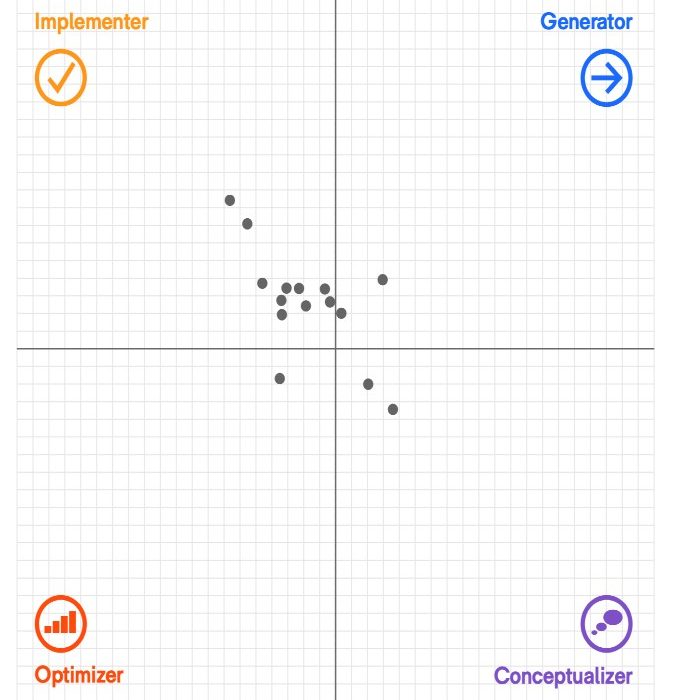Leveraging Cognitive Diversity: Not Enough Conceptualizers
What do you do when one innovation style is in short supply in your organization?
This team of restaurant managers in Southeast Asia recognized that they were implementers, a style well suited to the fast-moving restaurant business. Their resulting scatter diagram was no surprise to them. They spent a lot of time fighting the same “fires” over and over. They wanted to learn a more comprehensive approach to problem-solving, so they could develop more targeted, longer-term solutions to restaurant process problems.
To enhance their problem-solving skills and better tackle recurring issues, this team needed to think more creatively by exploring unconventional and out-of-the-box ideas and resulting solutions. This included thinking in abstract terms and not always focusing on the practical details. They realized they had to envision how things could be in the future and ultimately be more open to change and innovation. If they collaborate better and explore new ideas, theories, and approaches, they could venture into uncharted territory before turning their concepts into actionable plans.
With training focused on conceptualization, they learned to slow down and spend time defining and understanding problems and possible options before implementing solutions. Conceptualizers have a strong preference for generating new and creative ideas, as well as developing abstract and innovative concepts. This stage of the process focuses on exploring new possibilities and envisioning solutions. As a result, they experienced a huge shift in their collective mindsets which led them to be much more strategic thinkers and leaders who were more capable in all facets of the business.
What ideas and takeaways came out of the training?
- Conduct more in-depth root cause analyses to identify underlying issues.
- Foster a culture of continuous improvement by regularly reviewing processes.
- Establish effective feedback loops with stakeholders for valuable insights.
- Promote more collaboration among team members and other stakeholders.
- Consider implementing technology solutions and tools for problem-solving.
- Connect team members with mentors or coaches for guidance.
- Research industry best practices and benchmark against them.
- Conduct regular customer surveys to gather insights for improvement.
What did they learn?
By taking the time to define the problem accurately, it becomes easier to identify the root causes and underlying issues. This efficiency streamlines the problem-solving process and reduces the risk of solving symptoms rather than the actual problem. All stakeholders, including customers and employees, are more likely to see positive outcomes which leads to improved overall satisfaction, reputation, and success.
“You’re an innovator, you just don’t know it yet!” Learn more about the Basadur Profile and how it measures cognitive diversity to support your team in achieving innovative results.
Ready to take The Profile?


